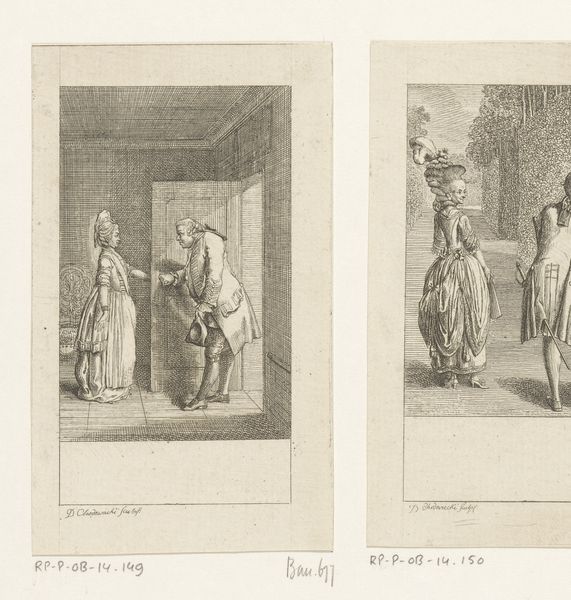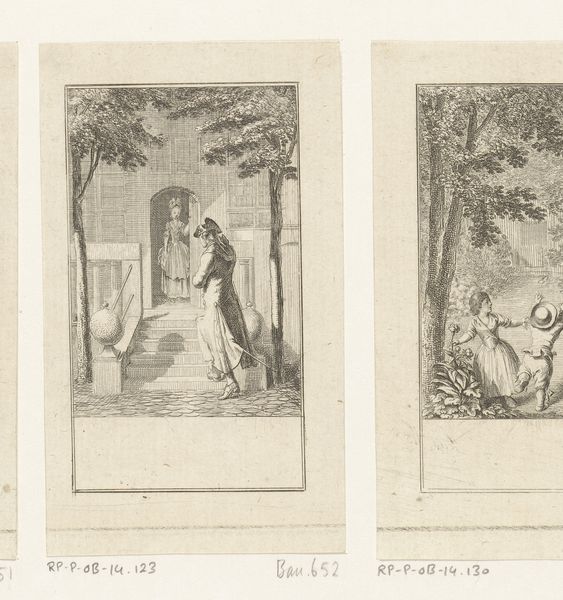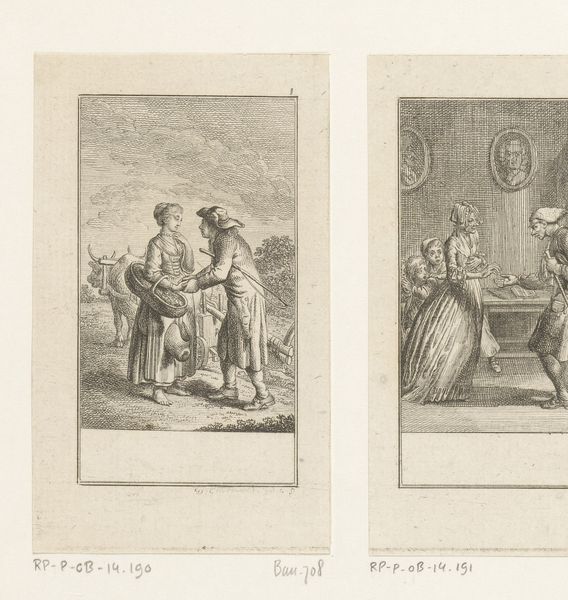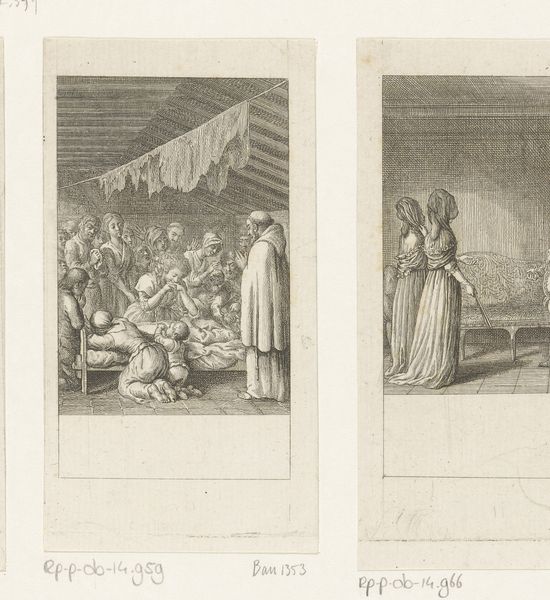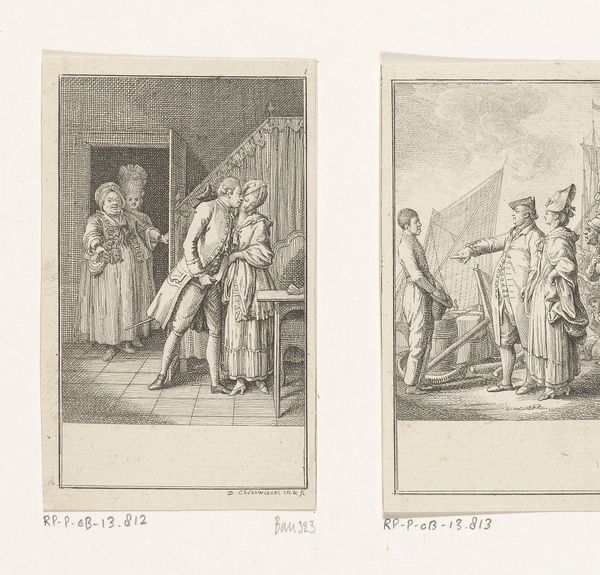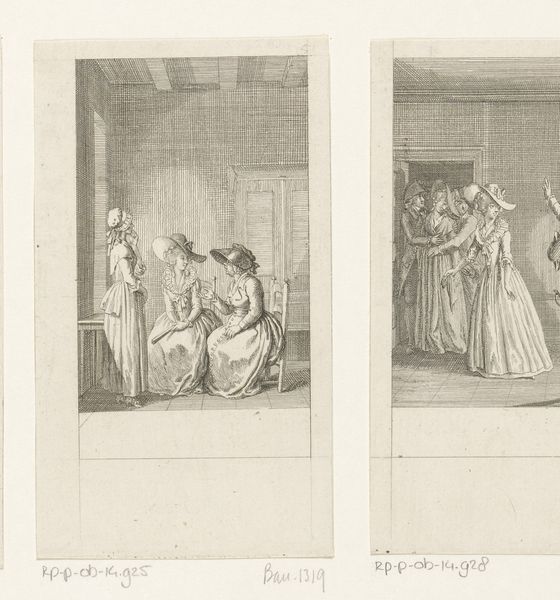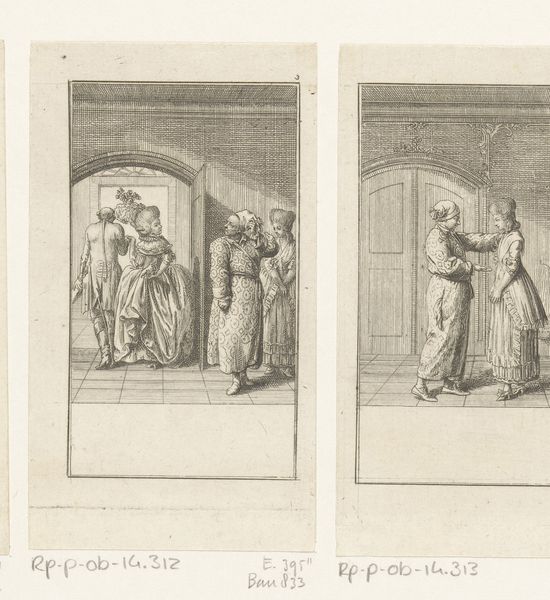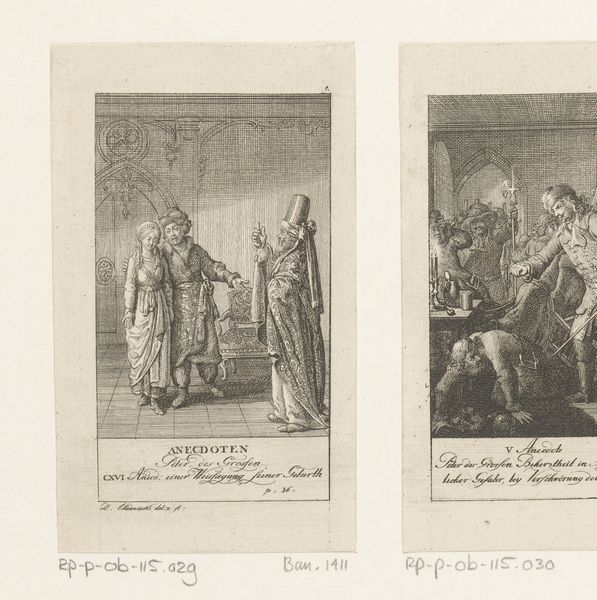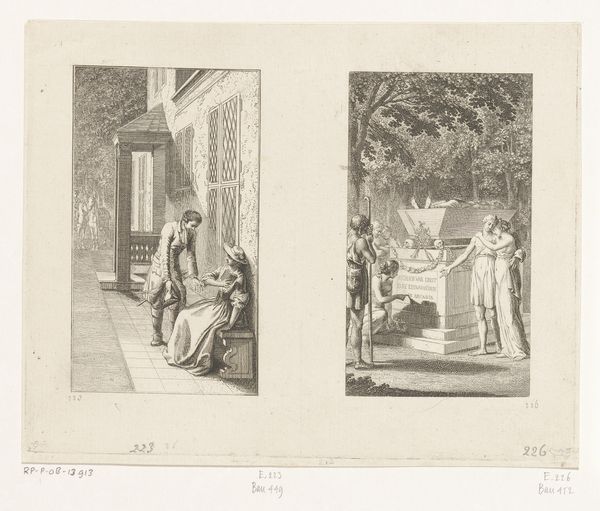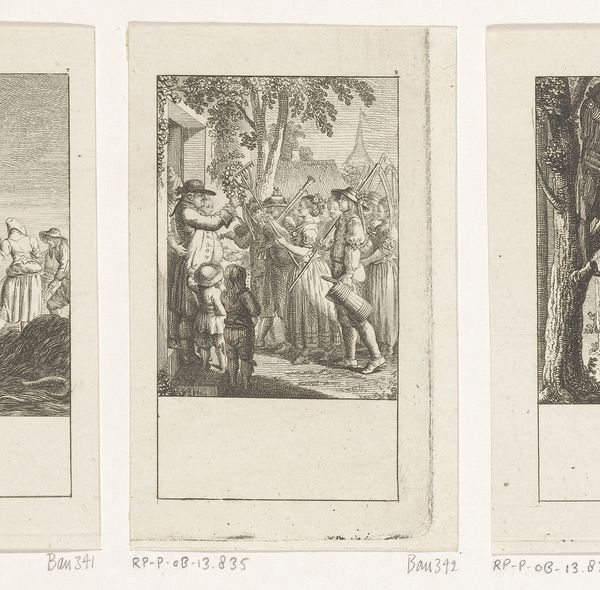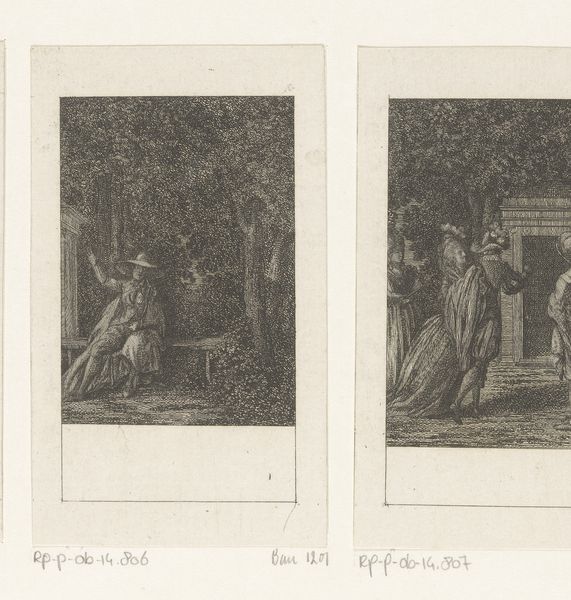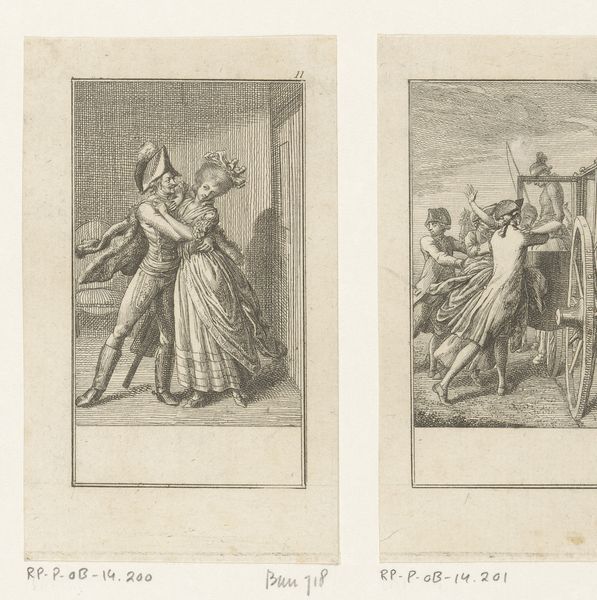
Dimensions: height 113 mm, width 64 mm
Copyright: Rijks Museum: Open Domain
Editor: This is "Thuiskomst van woekeraar Faustin," or "Homecoming of the usurer Faustin" by Daniel Nikolaus Chodowiecki, an engraving from 1779. There's such stark contrast between the two scenes: a cramped, anxious interior scene versus one taking place in an impoverished hut in the wilderness. What exactly am I looking at? Curator: Precisely. Chodowiecki, working within the Enlightenment, presents a moral commentary on economic practices. The title reveals a narrative, the homecoming of a "woekeraar" – a usurer. Consider the implications of that label. What power structures enable someone to become a usurer, and what are the social consequences? Editor: So, this isn't just a scene of everyday life, but a critique? The first image depicts a cluster of family or servants huddled in the left image in what looks like quiet concern as an exchange happens between two standing figures on the right side; in contrast, the second image depicts two people outdoors at a very rough looking hut, one person is kneeling and the other standing. Is he suggesting something about wealth, poverty, and morality? Curator: Yes, through printmaking, Chodowiecki disseminates a pointed message. Reflect on the Baroque style: its penchant for dramatic storytelling is co-opted here. How might this dual composition—the family scene and the wilderness encounter—speak to the social divide created by unchecked capitalism? Editor: It's almost as if one scene is a direct result of the other. That maybe the hardships reflected in the second scene are as a result of the financial hardships caused by the person represented in the first. Curator: Indeed. Now, how do we understand the positioning of figures? Are there power dynamics expressed through their body language, through gender, perhaps? What does that suggest about social roles during this period and the critique being offered? Editor: I hadn't considered the individual stories within the larger narrative. Thank you for highlighting the many layers of socio-political context here. Curator: The act of observing art involves understanding context as a narrative driven and inherently a cultural dialogue of it's time and its effects on current perspectives.
Comments
No comments
Be the first to comment and join the conversation on the ultimate creative platform.

